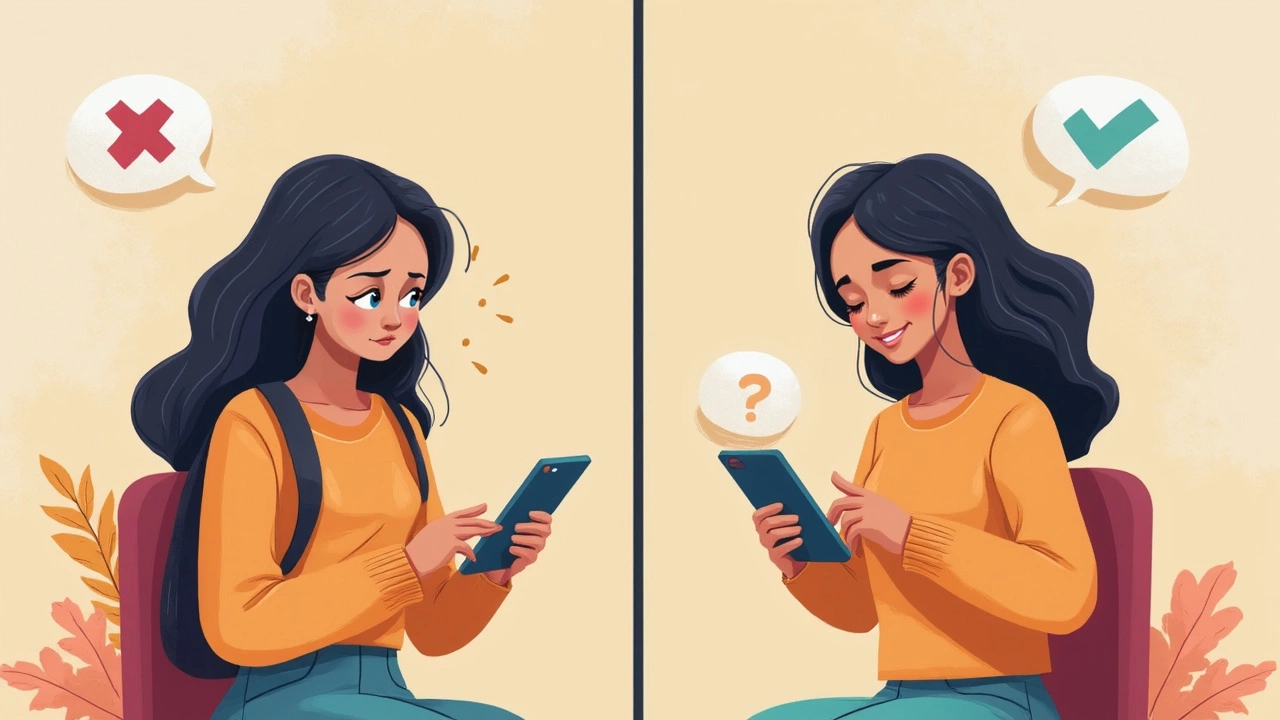Imagine this: you’re trying to order coffee in London, and you stumble over a basic phrase. Instant stress, right? It’s a feeling a lot of people know all too well. English isn’t just a school subject or a cool extra on your résumé—it’s your ticket to new connections, travel, better jobs, and just being able to say what’s really on your mind. But speaking English confidently? That’s where most people trip up. Reading and writing might click, but talking with strangers, native speakers, or even friends? Totally different game.
Why Most People Struggle to Speak English Fluently
Let’s be real: most folks don’t lack vocabulary. You know hundreds, maybe thousands, of words. But when you’re asked a question in real time, your mind goes blank or you freeze. It’s not because you’re not smart enough, and it’s definitely not because your teacher failed you. Speaking a language uses different parts of your brain compared to reading or writing. You need fast recall, automatic reaction, and confidence to keep the words flowing without second-guessing every sentence.
Here’s a wild fact: about 70% of English learners say their biggest fear is speaking, not grammar mistakes or bad writing. Why? Fear of looking silly. But studies from Cambridge and MIT have shown that regular, low-stakes speaking practice cuts anxiety by half within three months. The catch? Most classroom setups don’t give you enough real practice. You might raise your hand once or twice. On top of that, most people practice reading and memorizing, but not actually speaking out loud. You have to build those neural connections through voice training and conversation, not just silent studying.
The digital world’s flooded with apps promising to make you fluent overnight. But which ones actually help you speak, not just memorize? What separates an app that works from one hyped up by ads? That’s what we’re here to untangle.
What Makes an English Speaking App Truly Effective?
So, how do you know if an app goes beyond grammar drills and really targets speaking skills? Start with this checklist:
- Interactive Speaking Practice: Does it push you to speak out loud, not just tap words?
- Speech Recognition: Can it give instant feedback on your pronunciation?
- Real Conversations: Are there real-life dialogues, not just written text?
- Live Tutors or Speaking Partners: Does it connect you with native speakers or real people?
- Motivation Boosters: Are there challenges and regular reminders so you don’t quit after a week?
Take Duolingo for example—great for beginners, super fun, but limited when it comes to real spoken fluency. Compare that to an app like ELSA Speak, which focuses on your accent and pronunciation, breaking down each sound until you get it right. ELSA uses AI to give you detailed pronunciation feedback, which is rare in most free apps.
Another power player is Speak English fluently, which lands inside the keywords for a reason. This type of app is built to help you overcome hesitation and start responding more naturally. Some apps offer daily live chatrooms so you can talk with strangers in a low-pressure environment—a huge confidence booster. Features like speech recognition have gotten wildly better since 2022, with error rates dropping from 20% to just 7% in apps that use the newest AI models, according to a 2024 report from Oxford Research Lab.
But not all tech is created equal. Some platforms use bots or pre-recorded phrases, which feel awkward after a while. For fluent speaking, nothing beats the unpredictability of live conversation. So, check reviews—and try the free trial before you commit to any subscription.
| App Name | Main Focus | Speech Recognition | Live Interaction | Free Version Available |
|---|---|---|---|---|
| Duolingo | General language basics | Basic | No | Yes |
| ELSA Speak | Pronunciation | Advanced | No | Limited |
| Cambly | Live conversation | No | Yes (1:1 tutors) | Trial available |
| Speak (by SPEAK Ai) | AI Practice + Video calls | Advanced | Yes | Limited |
| italki | Live Tutors | No | Yes (1:1 sessions) | No |
If speaking fluency is your goal, focus on apps with robust speaking and listening elements. Don’t get distracted by game-like quizzes—they’re fun, but won’t get you chatting with confidence.

The Best Apps Person to Person: What Real Learners Say
If you ask English learners what really helped them speak fluently, you won’t hear the same answer twice. Some swear by daily practice with AI tutors; others need the rush of live video chats. That’s because everyone learns habitually, and your personality plays a part. Apps alone aren’t magic—your commitment fills in the rest. But feedback from actual users can tell you which features to seek.
Sara from Mumbai says she tried five different apps before sticking with Cambly. She liked the real talks with native speakers, not just memorizing phrases. Her tip: schedule regular sessions instead of random chats. Statistically, those booking three sessions a week double their improvement rate within six weeks over those who practice solo. That’s from a 2024 user survey by Cambly itself.
Then there’s Arif, a university student, who used ELSA Speak to clean up his pronunciation. ELSA tracks every mistake and serves up drills that target your weakest sounds. After eight weeks, Arif noticed he wasn’t being asked to repeat himself in class nearly as often. His advice? Don’t ignore the app’s low accuracy scores—use them as a challenge, not a criticism.
For anyone craving a classroom vibe, italki stands out. It connects you to thousands of tutors for real-time, affordable lessons. Whether you favor a friendly chat or structured class, you’ll find someone who matches your learning style. But don’t expect it to be free; you pay per lesson, and popular tutors can be booked out for days.
Finally, newbies flock to Duolingo for its gamified lessons, but most move on quickly in search of real conversations. While it’s great for vocabulary, it can’t simulate the back-and-forth of live speech. That’s where apps like Speak Ai come in—they combine text, audio, and video practice for a full-circle speaking experience.
One thing’s clear: users who set micro-goals—like being able to introduce themselves in three sentences or tell a story in one minute—progress faster than those who just “play around.” Several teachers on Reddit’s r/languagelearning point out that tracking your streak (like Duolingo’s daily goals) helps keep motivation up. Small, daily habits win the race.
Hidden Tricks for Getting the Most Out of English Speaking Apps
You can install the top-rated app in the world, but unless you tweak your approach, you’ll fall into the same old rut. Most people download an app, get excited for a week, then drop off. If you want real fluency, treat your practice like going to the gym: short, regular workouts beat long weekend marathons.
- Speak Out Loud Everywhere: Try narrating your day or reading street signs out loud. Your phone’s voice recorder is your secret training buddy—listen back to spot your weak points.
- Don’t Skip the Hard Stuff: Every app has tricky pronunciation drills or wicked fast dialogues. Don’t skip these—they’re where the magic happens.
- Set Mini-Goals: Instead of vague promises like “get better at speaking,” aim for specifics. For example, “order food confidently in English by next Friday.”
- Mix Passive and Active Practice: Watch English-language shows with subtitles, then retell what happened using your app. The act of explaining gets your speaking muscles firing.
- Record Yourself: Most apps have voice comparison, or you can use your phone’s recorder. Compare your speech to a native speaker—the gaps are your personal treasure map.
- Find a Friend: Use language exchange features or social communities in these apps to pair up with a partner who actually shows up every week. Holding each other accountable works wonders.
- Reward Yourself: Celebrate milestones—maybe every ten days of practice, treat yourself to something fun. Studies show linking rewards to habits makes the routine stickier.
Some apps also offer “shadowing” exercises, where you mimic a native speaker immediately after they say a phrase. This technique, backed by decades of research, trains your mouth and brain to sync up. Try it with TED Talks or YouTube clips, then switch on your app’s speaking challenge and see the improvement.

What the Future Holds: AI, Immersion, and Going Beyond the App
As of June 2025, the best English apps now use AI to adapt lessons in real time. If you mispronounce a word, the lesson changes right away to focus on just that sound. Some, like Speak Ai, have virtual role-playing: you practice ordering at a mock café or surviving an airport customs check. These little “missions” get as close as possible to real-life situations, which is what your brain craves when trying to break through the speaking barrier.
Already, stats from App Annie show an explosion in daily use of speaking platforms—up 45% since 2022, especially in India, Brazil, and Vietnam. More apps are teaming up with social media, too, letting you share progress on Instagram or TikTok for extra social pressure (and likes). For users craving deeper immersion, new features let you join 24/7 voice rooms, jump into debates, or swap stories with people as interested in learning as you.
But no app can cover everything. If you’re hungry to go beyond the script, get out in the real world, join local clubs, or volunteer at international events. Use your app as a launchpad, not a crutch. The real shift happens when you stop fearing your mistakes and start using English as your default setting, even when it feels awkward.
So, which app can help you speak English fluently? The simple answer: the one you use every day, that pushes you into new speaking zones, and makes you want to come back for more. Try out a few, see which vibe matches you, and jump into the conversation—even if your first word comes out shaky. The only fluency test that matters is how easily you call for coffee the next time you’re in London. And with these tools in your pocket, you’ll get there sooner than you think.

